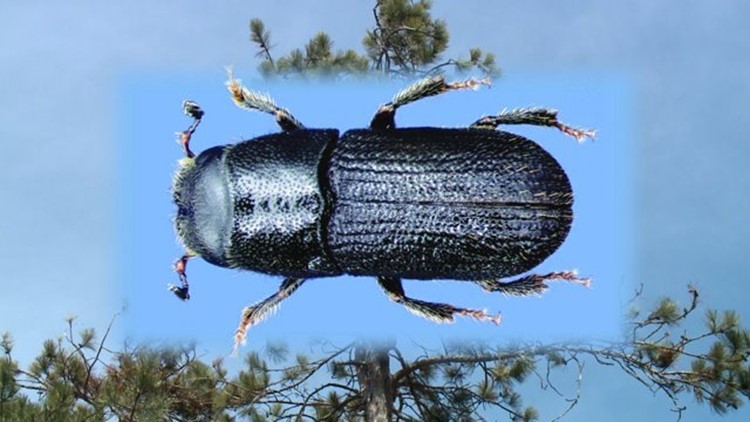WALLINGFORD--A tiny beetle, discovered for the first time in Connecticut just two weeks ago, is causing big problems for pine trees in state.
The Connecticut Agricultural Experiment Station and the Department of Energy and Environmental Protection have announced that the southern pine beetle was detected in Wallingford's Wharton Brook State Park, in roughly two dozen red pine trees, on March 17 by staff members.
This is the first detection of this pest ever in Connecticut. Four sites in New Haven County, one in Litchfield County and one in Hartford County have been confirmed as being positive for the beetle, which most often attacks hard pines.
Connecticut has several non-native hard pines that are vulnerable such as the red pine, scotch pine and Austrian pine. The native tree of most concern is pitch pine. Pitch pine was once an abundant tree in the state, but due to development of its preferred habitat--the sand plain ecosystem--it remains in scattered patches throughout the state.
"Although pitch pine contributes a little to the overall make up of Connecticut's forests, it's potential loss is of grave concern primarily due to the unique and highly valued habitat it provides for rare and endangered species depending upon pine oak sandy barrens,"said Christopher Martin, director of forestry for DEEP.
Although the southern pine beetle is a southern species, it has been slowly expanding its range northward in recent years. That has caused significant pine mortality in New Jersey over the last decade. And last fall it was first discovered in eastern Long Island.
It's unclear how or when the beetles first arrived in Connecticut, but experts suggest it could have been through the air. Even though they do not fly, it's possible because of their diminutive nature, at 2 millimeters in length, that storm winds could have carried them to southern New England.
Pines attempt to push the attacking beetles out with the flow of resin. Attacked trees are then covered with small popcorn-like blobs of dried resin. If the attack is successful, the beetles lay eggs under the bark, the larvae then feed on the circulatory system of the tree and the tree will die within a year or two.
If you see pines with the popcorn resin please contact the Connecticut Agricultural Experiment Station at 203-974-8474.



